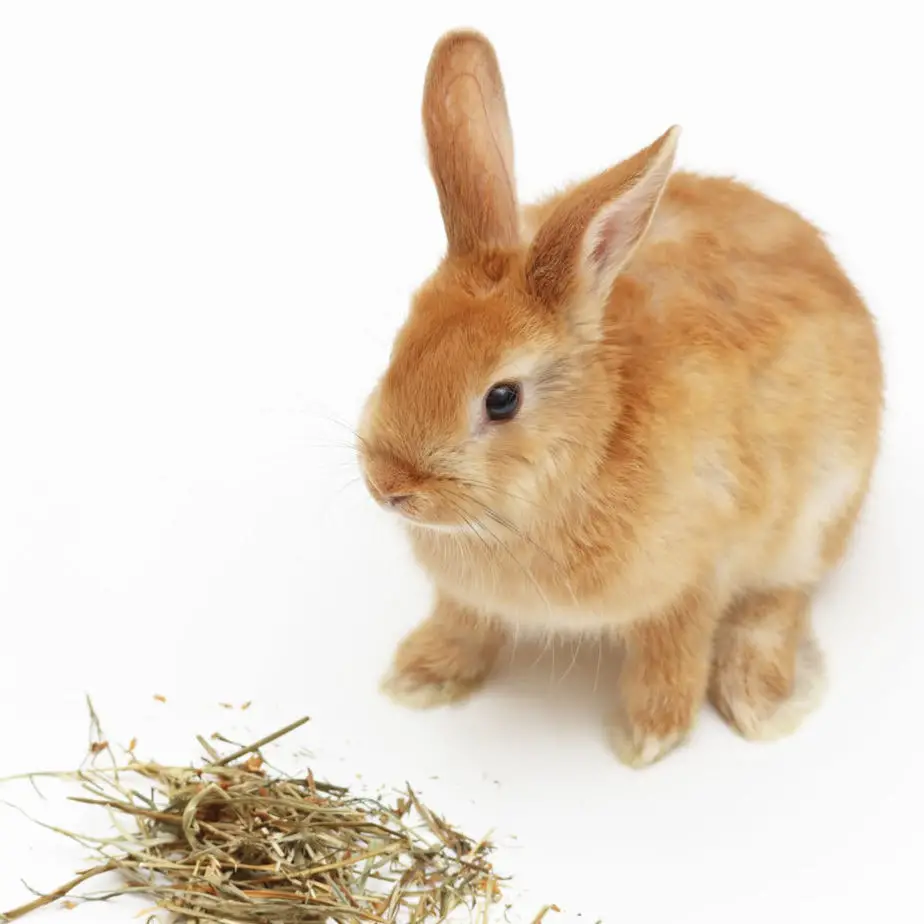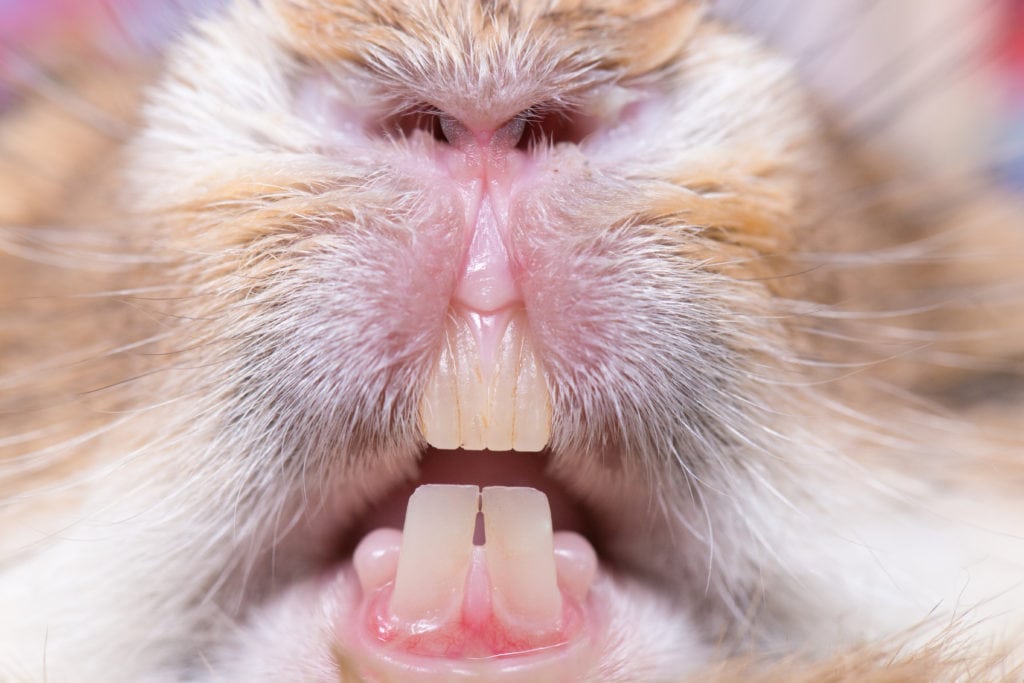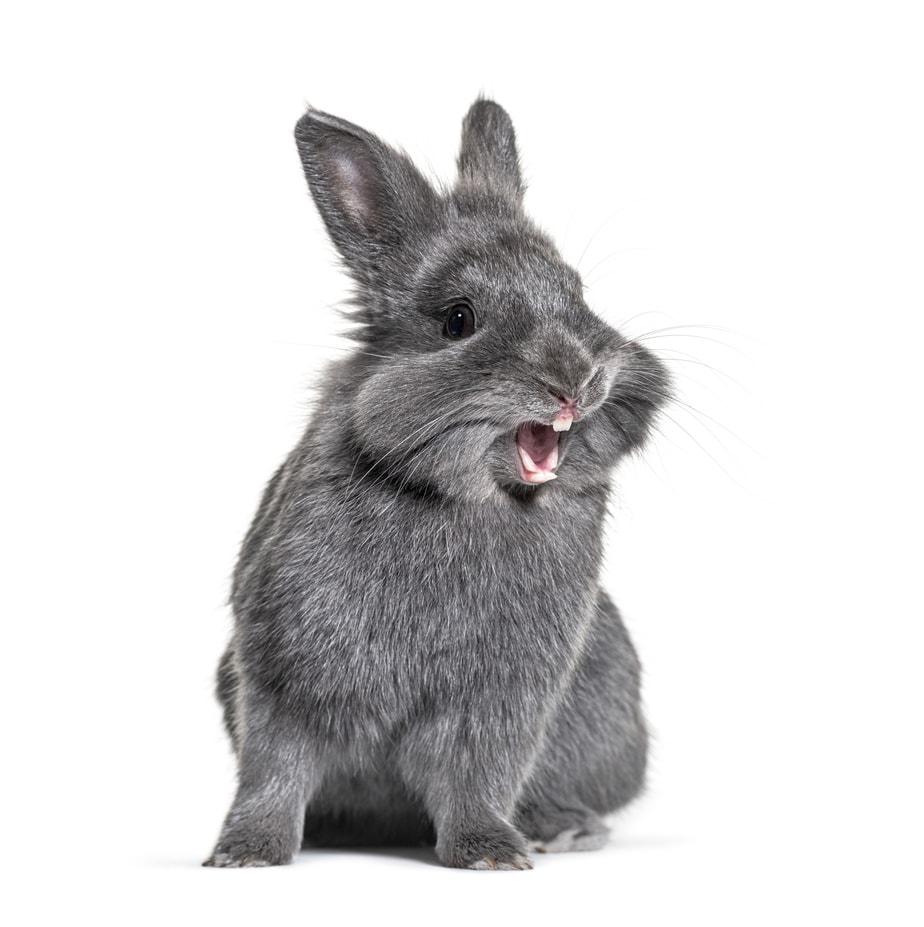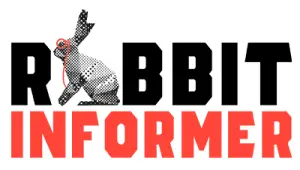
Rabbits, like all animals, have their own ways of communication with other rabbits. However, because humans cannot speak with their rabbits, they must rely on their rabbit’s body language in order to know how to properly care for their bunny.
Rabbits communicate through sounds and body language. While rabbits are relatively quiet animals, they do make many different noises whether they’re hungry or playful. A rabbit’s body language will notify their owner as to how they are feeling and whether they need space and silence.
Owning a rabbit comes with learning each rabbit’s individual personality. Not all rabbits are the same, so understanding key indicators as to when they are hungry, upset, or playful will help you two bond quicker and allow your rabbit to trust you fully. There’s so much more to know, so let’s learn together, shall we.
Is My Rabbit Happy?
When your rabbit is happy, they will communicate their emotions in some of the following ways.
Chin Rubbing: You may witness your rabbit rub its chin on objects or people. Rabbits have many scent glands on their chins that they use to scent mark territories and objects. This is a way of marking their territory and often means that they really like you.
Binky: The binky is the unique and acrobatic jump accompanied by twisting the body or kicking the legs. Rabbits use the binky to communicate that they are feeling very happy and playful. It is a very sudden action and can be very startling, but don’t worry. This just means that your rabbit likes you!
Licking: When a bunny licks you, it means that it likes you and has fully accepted you. It’s similar to what a dog does to show affection and love.
Flopping: A content rabbit that is sitting still or grooming may suddenly flop onto its side and lay still. While many owners often fear that something drastic has happened to their rabbit, don’t worry. This just means that they are really happy and comfortable.
Rolling Over on their Side or Back: This is a sign of pure delight and total comfort with his surroundings. It may seem sudden, but it is very similar to flopping and means the same thing.
Circling Your Feet: A rabbit that follows you around and starts circling your feet may just be trying to get your attention, but it can also mean that the rabbit is ready to mate and is trying to court you. It may start doing this while around other rabbits, but they also have other courting methods that they frequently use. If you do not plan to breed your rabbit and they show this behavior, it is advised that you neuter or spay them to stop this behavior.
Teeth Grinding: Gentle, soft grinding of the teeth in a relaxed rabbit means that the rabbit is completely content. It sounds similar to a cat purring. However, aggressive tooth grinding means something completely different. Loud and aggressive teeth grinding is a sign of pain or discomfort. Your rabbit will often also be tense or hunched up when this occurs.

Happy rabbits also can begin to cluck. This typically means that they’re enjoying a tasty snack, and are very happy. If your rabbit clucks when you offer a treat, it’s a favorite. This tends to be a very quiet sound, like many others that rabbits make.
A rabbit will sometimes begin to nudge you with its nose. If they lay their head on the floor while nudging you, they are requesting – or sometimes demanding – that you pet and groom them. If they refuse to allow you to pet them, they may just be hungry. When rabbits stand on their hind legs and touch you, they are begging for treats or attention.
When your rabbit wants you to pay attention to them, they will start to nudge you with their muzzle. This is absolutely adorable, and it is a very good sign. It means that they like and trust you. This will also occur when they are with people that they are very comfortable with.
TIP: It’s important to show your rabbit affection in a way that they understand. See my page all about how to actually show your rabbit affection here for some specific ways to do this.
Is My Rabbit Afraid?
If your rabbit does any of the following actions, then your rabbit may be afraid. It may be afraid of another animal in the house, or afraid of you because of something dangerous that happened to them when you were with them. If they are afraid, attempt to remove what or who they are afraid of, and make your rabbit comfortable.
Lunging: A sudden movement towards you with the head up, tail up, and ears back is a very clear form of rabbit communication. It is an unmistakable threat. When your rabbit does this, move away from them, and separate them from any other animals in the house so your rabbit can calm down and begin to feel safe again.
Thumping: This is the way rabbits communicate danger to other rabbits. It helps them communicate while in their burrows. However, it is sometimes a sign of annoyance.
Flat Rabbit: When a rabbit flattens itself on its belly with its head down and its ears held very flat, he or she is frightened and is trying to blend into his or her surroundings. This is different from flopping. When a rabbit has relaxed muscles, it is flopping. If your rabbit is tense and flat, then it is scared. The easiest way to identify the different emotions is by looking at your rabbit’s ears. Their ears are very expressive.
Grunting, Growling, Snorting, and Hissing: These are all ways to communicate varied stages of anger, stress, or feeling threatened. They may be followed with a lunge or bite. When a rabbit is grunting, it means that you should leave your rabbit alone. It is very irritated at you and may become aggressive if you do not leave it alone. This may happen when you are cleaning out its cage. In their eyes, you are destroying the home that they have spent a lot of time adjusting for their comfort.
Whimpering: A rabbit whimper is a sound of discomfort or mild fear. Many rabbits whimper when they don’t want to be held, but your bunny may also whimper if they don’t feel safe around their hutch mate. You should also check a whimpering bunny for signs of injury, just in case. If they are in pain, they may begin to scream.
If your rabbit expresses some of these behaviors towards other rabbits, it could mean that a conflict is about to take place. See the guide on this site all about why rabbits fight and how to stop them so you can know what circumstances often lead to a fight between rabbits and what you should do about it.

Is My Rabbit Injured or in Pain?
When a rabbit is screaming, it means they fear for its life. It sounds like a child’s scream and is just as sudden and frightening. It thankfully is an infrequent sound, but it’s never a sound that you should ignore. It also means that they are in a lot of pain. You should contact your veterinarian immediately if your rabbit begins to scream.
Not all rabbit sounds are unhappy. A content rabbit will purr. You’ll hear this sound while petting a bunny. Rabbits purr by tapping their teeth together.
Other Important Behaviors
If your rabbit turns its back on you in a very purposeful manner, it means that you have offended them in some way. Some rabbits will refuse to even look at you, and start pulling their ears over their eyes. This means that you have some making up to do. Giving them extra treats and attention may lead your rabbit to forgive you, but rabbits are very stubborn animals.
Low Squealing: Most rabbits will begin to do this when they want to be put down and allowed to run free.
Chasing: When two rabbits begin to chase each other, separate them immediately. While this may look like a game, it is not. Rabbits chase with the intent of biting each other.
Tense Body and an Upright Tail: This behavior indicates that they are very excited, and frequently happens when they are playing and having fun. Keep playing with them, they are loving it!
Tense Sitting Position with Ears Laid Back: This means that the rabbit is ready to defend itself. When this happens, be very careful and remove yourself from the situation.
Staring: Rabbits can stare at their owners for many reasons. However, most of the time it is out of fear, curiosity, or as an attempt to communicate with you. There is always a reason behind this behavior unless they are asleep. Rabbits possess unique eyelids and often sleep with their eyes open.
Rabbits can apologize to each other. Rabbits apologize by touching heads. If the rabbits groom each other after touching heads, then the apology has been officially accepted, and they will be nice to one another. Rabbits are usually keen to make amends but can be stubborn about what apologies they accept.
The ears of a rabbit are among their most expressive feature. If their ears are straight up, and they are frozen to the spot, then something has their interest, and they are paying close attention to it, even if they are not looking directly at it. If your rabbit starts thumping their foot while their ears are straight up and they are frozen to their spot, then they’re frightened, and you should attempt to remove what is frightening them from the room.
If you are worried about a sound that your rabbit has made or your rabbit’s behavior, contact your veterinarian. Do not wait to see what your rabbit does, just in case your rabbit is injured and in pain. Waiting can cause serious harm to your rabbit.
Watch the video below for some visual examples of the behaviors listed above:
Other Helpful Advice
- Rabbit Only Comes for Food? Six Better Ways to Bond – If you’re looking for some specific methods for bonding with your rabbit, take a look at this page all dedicated to doing just that!
- How to Train a Rabbit to Jump on Your Lap (Six Steps) – One very beneficial thing you can do to get your rabbit comfortable with you is to train them to spend some time in your lap. This page has step-by-step instructions for how to train this behavior in your pet rabbit.
